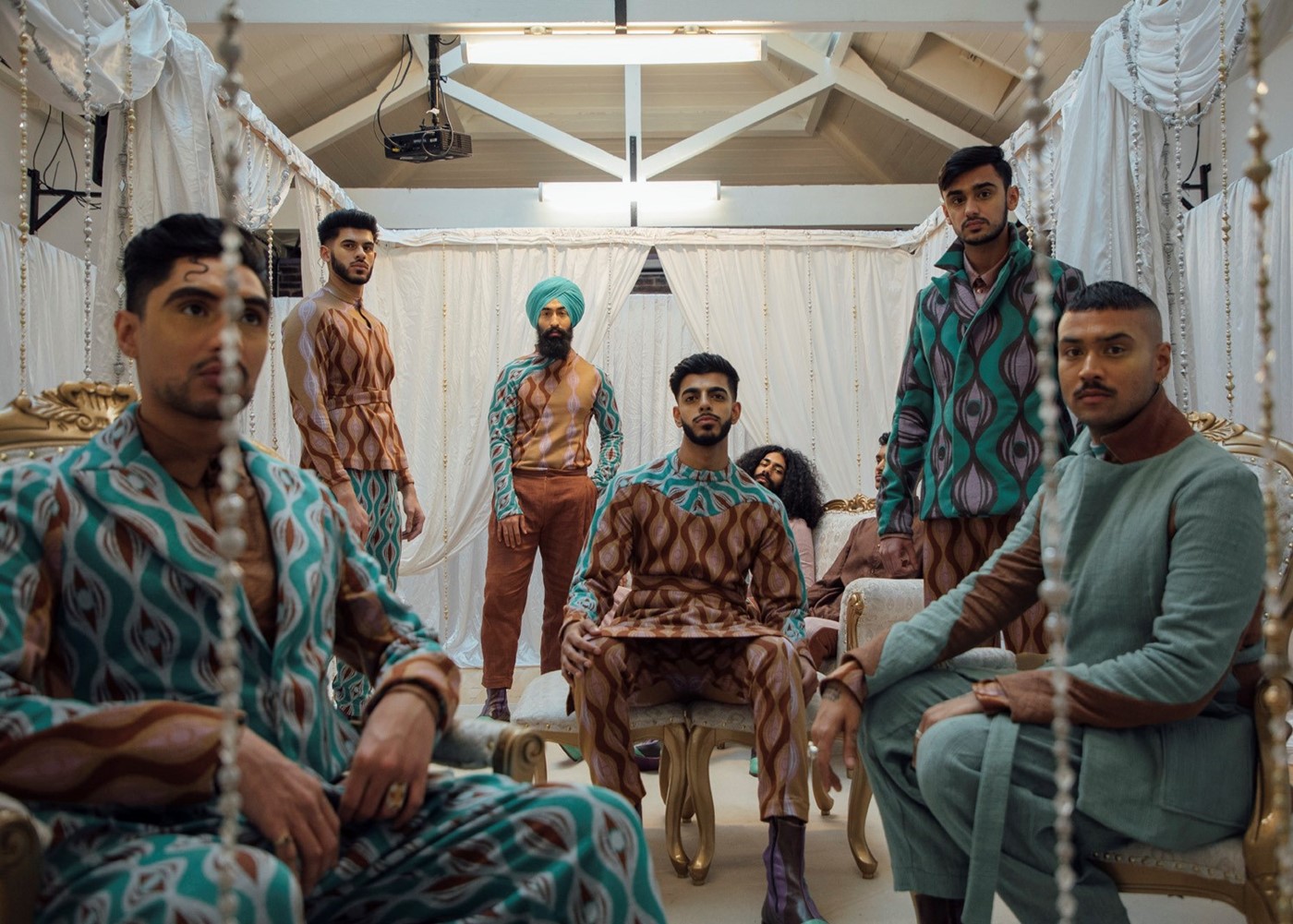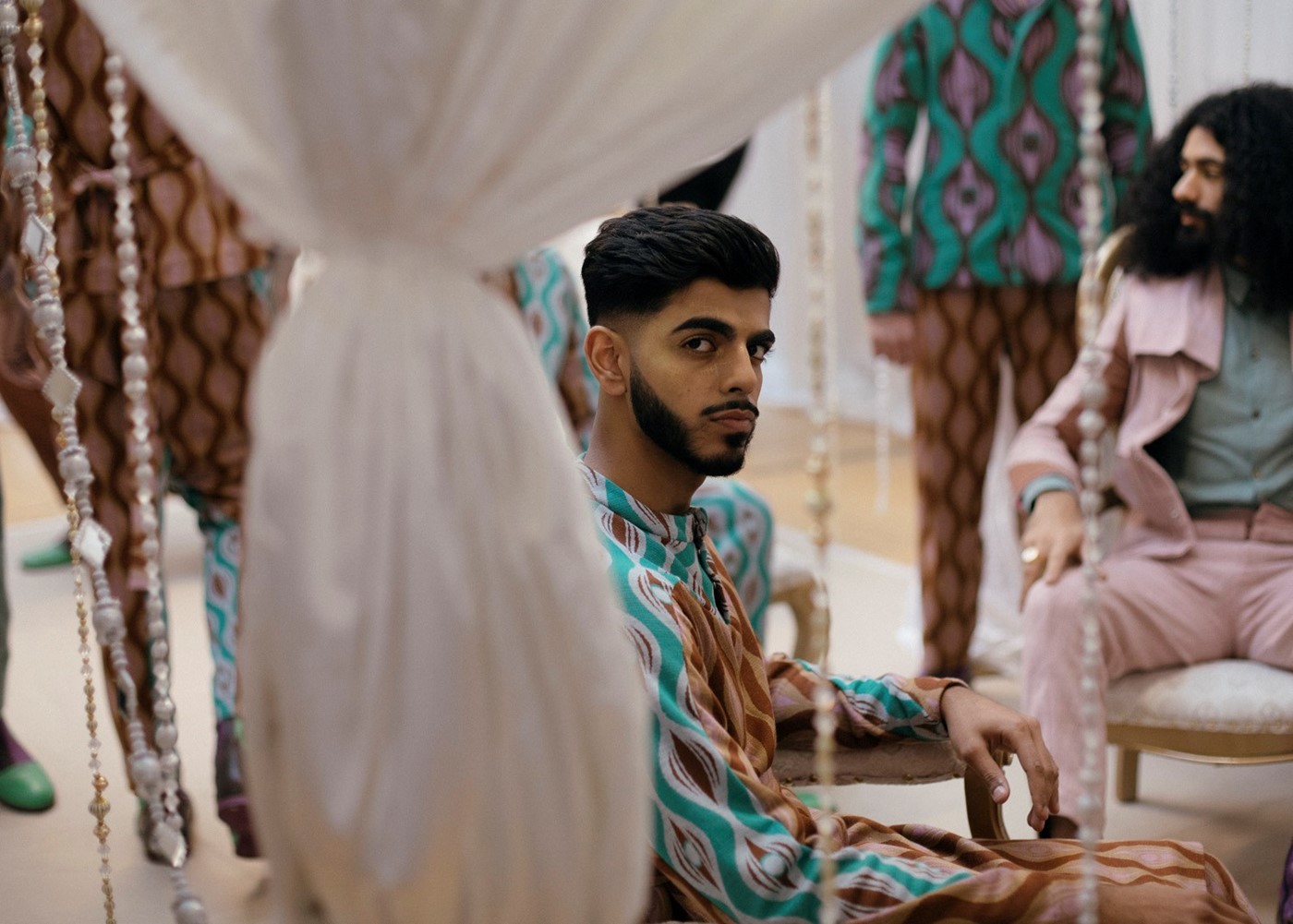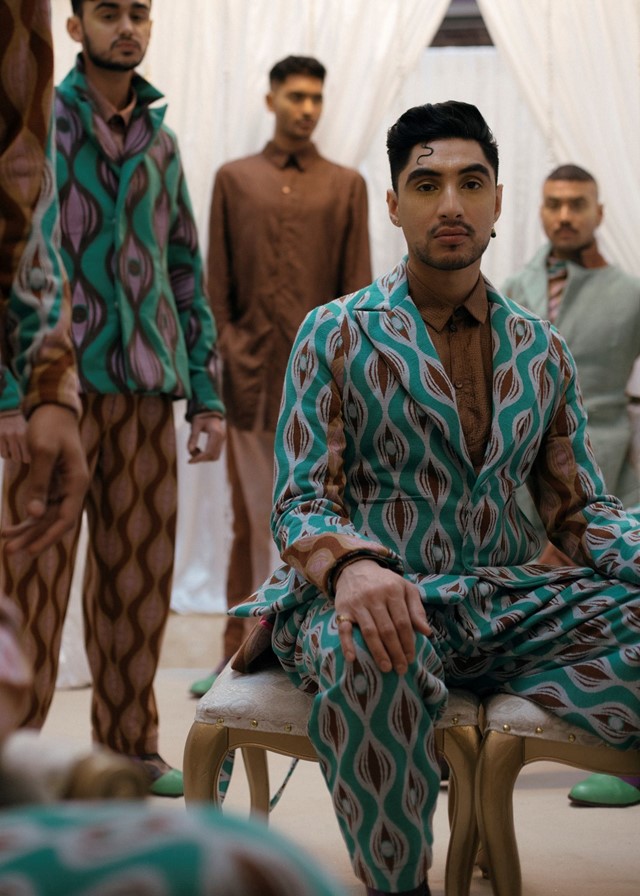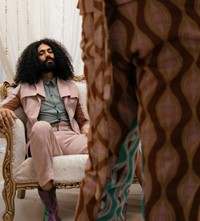Rahemur Rahman: A New Designer Exploring South Asian Identity
- TextTed Stansfield
A breakout star from London Fashion Week Men’s, the British-Bangladeshi designer heralds a new era for South Asians in Western fashion
Society is waking up to identity politics, and fashion is too. Particularly its young designers, who are now using clothing as a means of exploring their identities and representing their communities – many of which have been historically sidelined by the industry. Last weekend, London Fashion Week Men’s paid testament to this phenomenon: Art School’s Eden Loweth and Tom Barratt put on another show for and inspired by their trans and non-binary friends, while Paria Farzaneh and Priya Ahluwalia debuted collections that looked to their Iranian and Indian-Nigerian heritages, respectively
Newcomer Rahemur Rahman, who is British-Bangladeshi, similarly explored his roots, staging a personal and powerful presentation which aimed to “reinterpret and re-tell stories of South Asian identity”. Taking inspiration from old family photos, his father’s love for traditional British tailoring and his mother’s for the clothing of her home country, his collection combined Western and South Asian tropes, reflecting the cultural duality of his own family and their relationship to fashion.
Speaking to Rahman just after his show, he explains that the launch of his label has been a long time coming. “I just didn’t have the confidence before,” he says. “I wasn’t loving myself. But that’s changed now, which is why I think it’s flourished now.” After graduating from Central Saint Martins – Rahman was on the same course as designers Richard Malone and A Sai Ta, with whom he remains friends – he was encouraged to start his brand there and then, but didn’t feel ready, so instead took up work at a creative agency that works predominantly with the South Asian community.

While he was working with this agency, Rahman decided to organise a shoot with some of his friends – South Asian women straddling successful professional careers with bridal wear modelling. “I was so inspired by them, and just wanted to show them how amazing they are,” he says. Fashion journalist and longtime advocate of young designers Sarah Mower picked up on the shoot, contacted him over Instagram and met him for coffee. Through her encouragement, Rahman decided to launch his label – which brings us to this weekend.
“I want to make clothes for people who dress like me,” he says. “People who want that slight bit of adventurousness, who want more colour and more pattern, but for the clothes to be cut really well. Because I think a lot of menswear designers are forgetting to cut and to focus on tailoring and pattern cutting. But that is with the rise of street culture, which is great – I dress in luxe athleisure as well – but people do want tailoring too. So that’s what I wanted to really focus on. I’ve named it ‘for the people who dream in colour’, because I really think that sums it up. Colour makes everyone feel happy.”

The colours he used this season were drawn from those family photos – taken in the 1990s – and created using natural dyes and a traditional Bangladeshi method. Created from cotton, wool and silk, there’s a real beauty to these pieces; they’re tailored beautifully, the shirts and jackets gently nipped in below the armpit – much higher than you might expect, but in a way that is undeniably elegant.
While the style of these clothes and the methods he used to create them reflect Rahman’s roots, he didn’t stop there. The designer chose to stage the presentation in a Bangladeshi community centre that he teaches at every week – which, coincidentally, sits opposite the Truman Brewery where the rest of London Fashion Week Men’s was hosted. Additionally, he cast solely South Asian models in the show, ensuring it was as representative as possible. “We tried to make sure it was a real mix,” he says of his selection. “We wanted to make sure there was someone who was Sikh, Muslim, and Hindu; someone who was Indian, Pakistani, Bangladeshi. Because I think a lot of the time when people say South Asian, we all get lumped together. But we’re all so different.”

This is where Rahman’s vision becomes particularly powerful. While black representation in fashion has come on leaps and bounds in the last few years, South Asian representation has not progressed to the same degree. “The black community has done amazing stuff to make sure they’re seen, heard and respected. And the South Asians, it’s taken us a while to come together.” Not only was Rahman’s cast South Asian, but his entire team was too – from the stylist, Kamran Rajput, to the musician who soundtracked the presentation, Leo Kalyan. Actors Shazad Latif and Nabhaan Rizwan attended the event, along with the latter’s brother, director Mawaan Rizwan, while Riz Ahmed got in touch to say that he wants to come and see the collection when he’s back in the country.
During the presentation, a journalist from a South Asian magazine approached Rahman and said, “You don’t understand what you’ve done – this is a huge moment for South Asian people.” Powerful and quietly beautiful, the show was a watershed moment for Rahman and, potentially, South Asian representation in Western fashion, too. One that feels quite overdue.
















